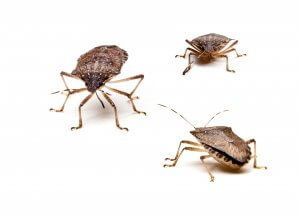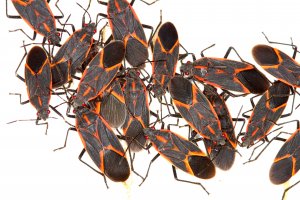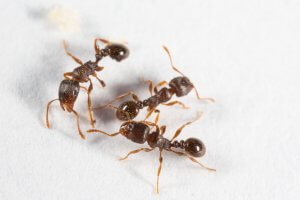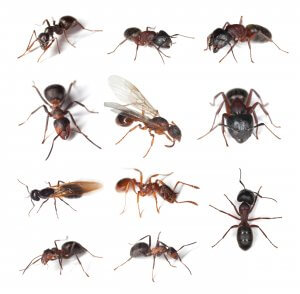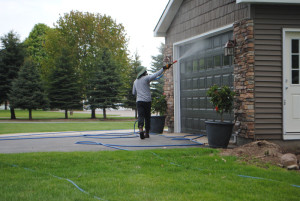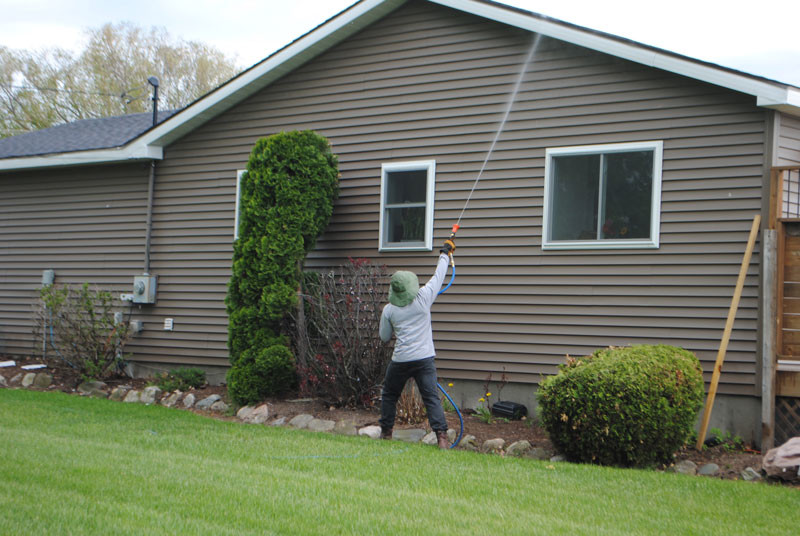Spring is here, which means so is everything (or everyone) that comes with it. We’ve mentioned these months being the mating season for various wildlife, but we have yet to touch on the creepy-crawlies that decide to make their way out of hiding as the snow dissipates.
When pests wake up in spring, they’re hungry, thirsty, and ready to find mates. To make up for their long winter’s nap, they tend to enthusiastically pursue these activities. Their valiant pursuits create problems that are all-too-common this time every year. Here are the most common pests you’re bound to encounter this spring, what they’re up to, and the challenges they cause.
Brown Marmorated Stink Bugs (BMSB)
During the fall, BMSB’s desperately seek out any warm place where they can hunker down for the winter. Once they find their spot, they become dormant until temperatures rise back up to survivable levels. Once this happens, they wake up with a one-track mind: mating. In their earnest attempts to get back outdoors, however, they tend to get trapped inside.Luckily for homeowners, BMSB’s don’t nest or reproduce indoors, bite, or spread disease. True to their name, however, they do stink. When threatened, BMSB’s secrete a foul-smelling substance from a particular scent gland. The scent is reminiscent of rotten vegetables. These smelly secretions can also leave behind a dark yellow stain on carpets, furniture, and window sills.
Boxelder Bugs
Starting in the early fall, boxelder bugs seek out warm, dry places where they can wait out the winter months. Unfortunately, those ideal places often include homes. When spring makes its appearance, boxelders become active again to reproduce and find newly rejuvenated food sources. When this happens, they vacate their winter hideaways in droves. If they were overwintering in your home, you’re going to run into them again in spring.
Boxelder bugs are a nuisance, but like BMSB’s, they’re not dangerous. Boxelders spread disease, don’t bite, lay eggs indoors, or eat fabrics or stored foods. Instead, they vacate the premises to seek flowers and the seeds of trees such as, you guessed it, the boxelder. The nuisance part comes from the quantity you may notice as they vacate. Boxelder excretions can also stain window ledges and other favored areas.
Pavement Ants
The short but very active pavement ant mating season begins in late spring. During which you may notice swarms of larger-than-average, reddish-black ants moving in alarmingly large groups, called clusters. After mating, the ants lay eggs in the tight crevices of pavement (aptly named). When young pavement ants emerge, they begin to look for a food source almost immediately.
In the home, pavement ants are most often encountered in swarms in your kitchen. They break down and carry off many types of stored food, especially sugars and grains. When food is available, they tend to linger. It’s not uncommon to find an ant infestation in pantries, cabinets, cupboards—anywhere food is readily available. They indeed will attack whatever they can get their mandibles on. Unlike other pests on this list, they tend to stay active as long as they’re warm and have food.
Carpenter Ants
During spring, these infamous wood-infesting ants come marching in to nest and search for water. Carpenter ant infestations tend to be the most noticeable at the beginning of the season. Starting in mid-spring, the reproductive carpenter ant castes swarm to seek mates and start new colonies. After mating, queen ants find ideal places to lay eggs. These eggs hatch into worker ants, and the infestation begins.
Carpenter ants are a problem because they colonize in wood. The tunnels they bore can compromise the structural integrity of wood products. Carpenter ants don’t eat the wood they infest like termites. Instead, they hunt for sources of sugar and protein. You may find forager ants in your basement, kitchen, or garden. Keep a close eye out for swarmers (winged) in particular. If you notice these flying ants in your home, chances are their nest is also inside your home.
Spring is always a lovely, refreshing time of year–, especially after the brutal Michigan winters. Don’t let any of these pests ruin that new-season bliss for you. If you need any help combating an infestation so you can enjoy the beautiful parts of spring, give us a call. We can deal with the dirty work so you can enjoy the rest.
